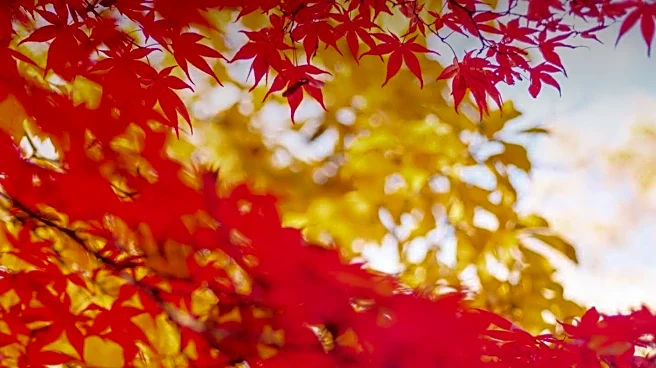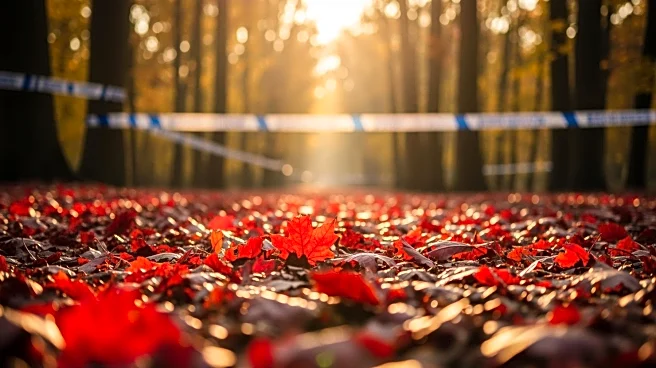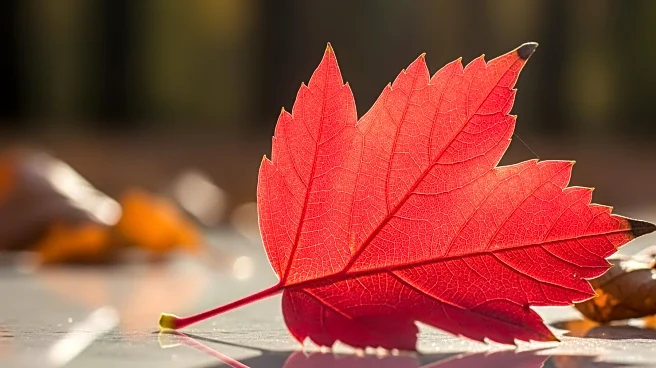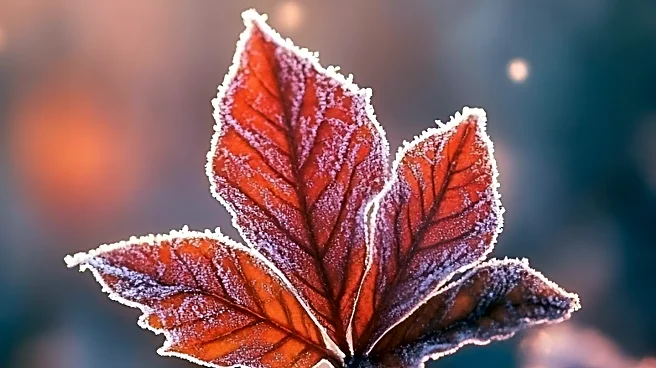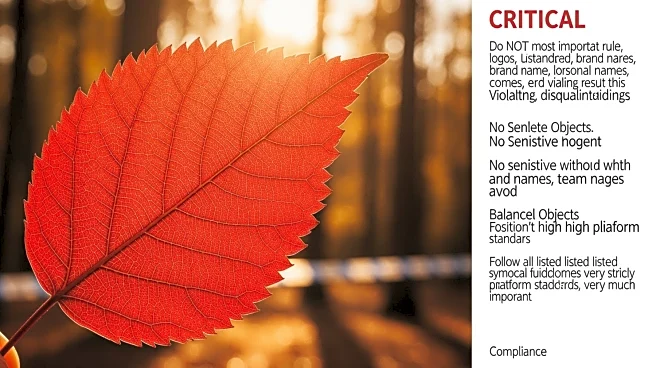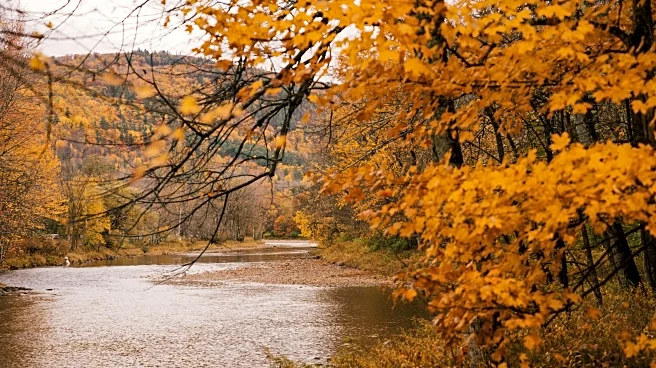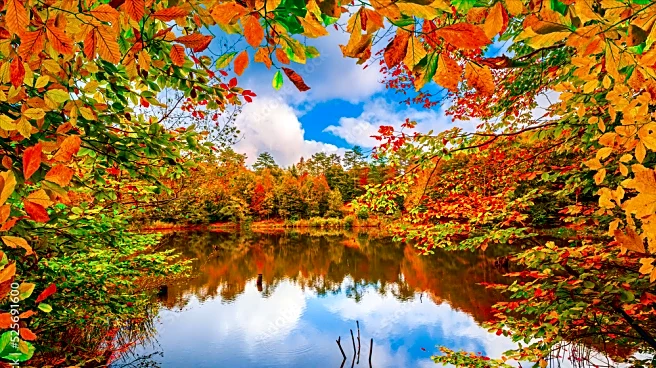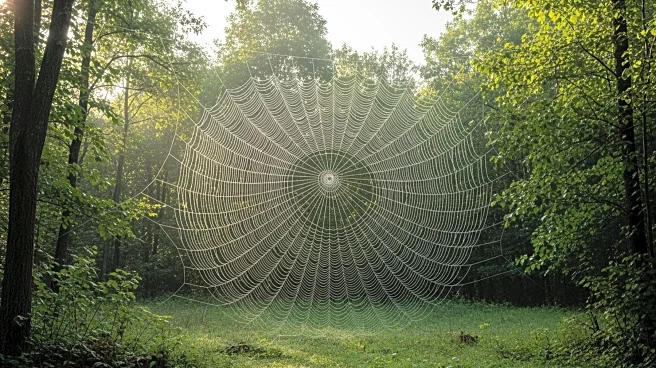What's Happening?
NPR's Short Wave podcast delves into the scientific mystery of why some leaves turn red in the fall. While the yellowing of leaves is understood to be due to the breakdown of chlorophyll, the process behind the red pigmentation remains unclear. Scientists
have identified that leaves must produce a new pigment to achieve the red color, but the reason for this transformation in dying leaves is not well understood. The podcast features insights from NPR science correspondent Nell Greenfieldboyce, who discusses various hypotheses surrounding this phenomenon.
Why It's Important?
Understanding the pigmentation process of leaves has broader implications for ecological and environmental studies. The red pigmentation could be linked to protective mechanisms against environmental stressors, which might offer insights into plant resilience and adaptation. This knowledge could inform conservation strategies and enhance our understanding of plant biology. Additionally, the aesthetic and cultural significance of fall foliage contributes to tourism and local economies, making this scientific inquiry relevant beyond academia.
